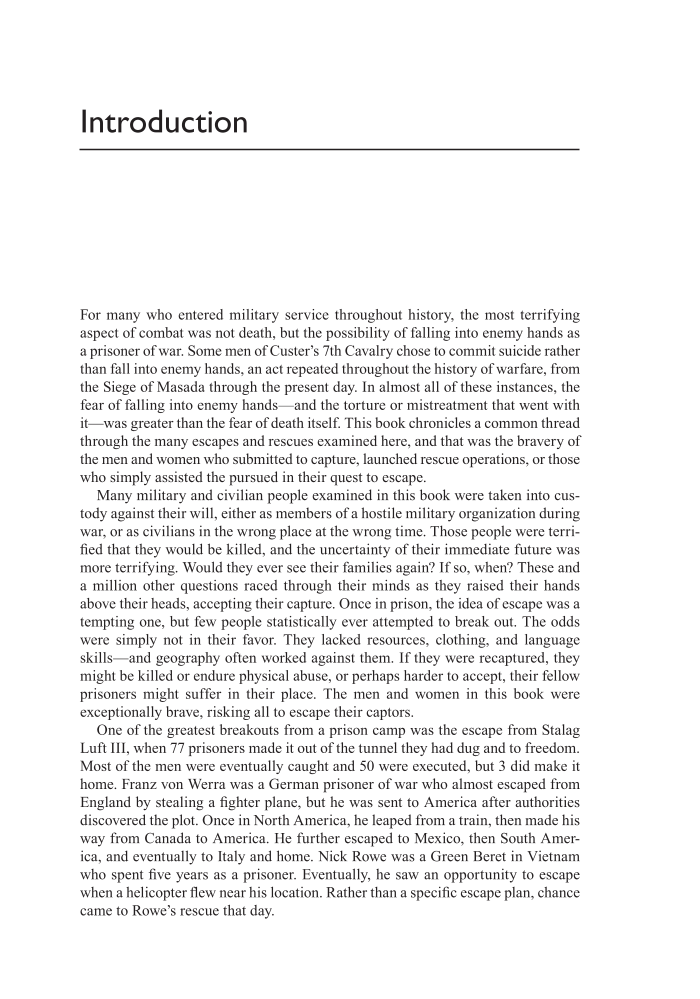Introduction For many who entered military service throughout history, the most terrifying aspect of combat was not death, but the possibility of falling into enemy hands as a prisoner of war. Some men of Custer’s 7th Cavalry chose to commit suicide rather than fall into enemy hands, an act repeated throughout the history of warfare, from the Siege of Masada through the present day. In almost all of these instances, the fear of falling into enemy hands—and the torture or mistreatment that went with it— was greater than the fear of death itself. This book chronicles a common thread through the many escapes and rescues examined here, and that was the bravery of the men and women who submitted to capture, launched rescue operations, or those who simply assisted the pursued in their quest to escape. Many military and civilian people examined in this book were taken into cus- tody against their will, either as members of a hostile military organization during war, or as civilians in the wrong place at the wrong time. Those people were terri- fied that they would be killed, and the uncertainty of their immediate future was more terrifying. Would they ever see their families again? If so, when? These and a million other questions raced through their minds as they raised their hands above their heads, accepting their capture. Once in prison, the idea of escape was a tempting one, but few people statistically ever attempted to break out. The odds were simply not in their favor. They lacked resources, clothing, and language skills— and geography often worked against them. If they were recaptured, they might be killed or endure physical abuse, or perhaps harder to accept, their fellow prisoners might suffer in their place. The men and women in this book were exceptionally brave, risking all to escape their captors. One of the greatest breakouts from a prison camp was the escape from Stalag Luft III, when 77 prisoners made it out of the tunnel they had dug and to freedom. Most of the men were eventually caught and 50 were executed, but 3 did make it home. Franz von Werra was a German prisoner of war who almost escaped from England by stealing a fighter plane, but he was sent to Amer i ca after authorities discovered the plot. Once in North America, he leaped from a train, then made his way from Canada to America. He further escaped to Mexico, then South Amer i ca, and eventually to Italy and home. Nick Rowe was a Green Beret in Vietnam who spent five years as a prisoner. Eventually, he saw an opportunity to escape when a he li cop ter flew near his location. Rather than a specific escape plan, chance came to Rowe’s rescue that day.
Document Details My Account Print multiple pages
Print
You have printed 0 times in the last 24 hours.
Your print count will reset on at .
You may print 0 more time(s) before then.
You may print a maximum of 0 pages at a time.

































































































































































































































































